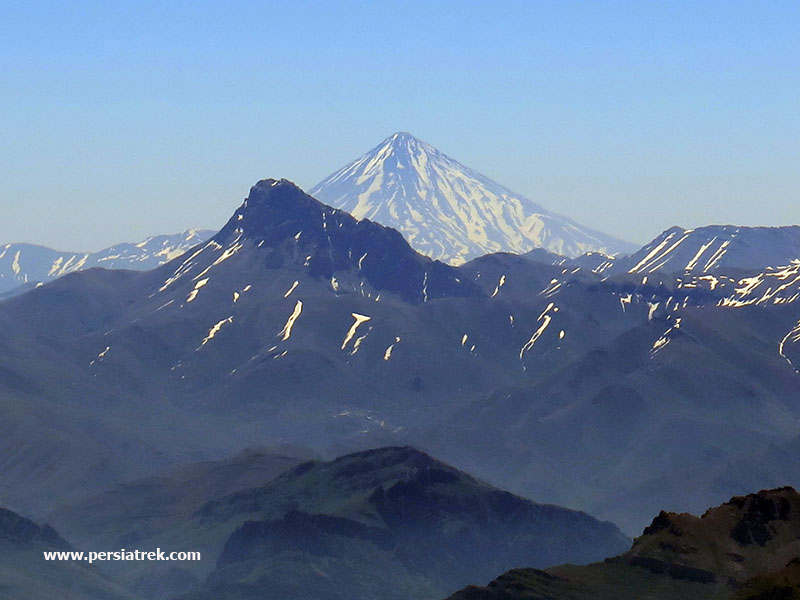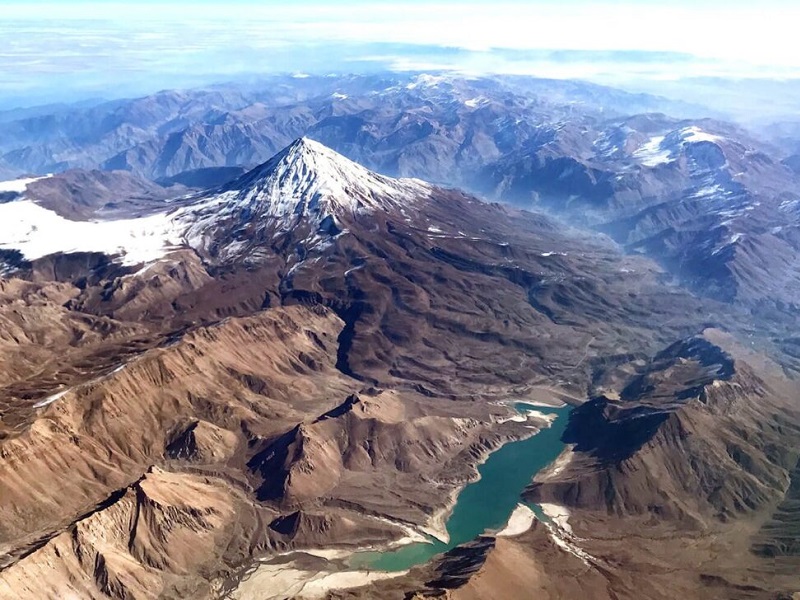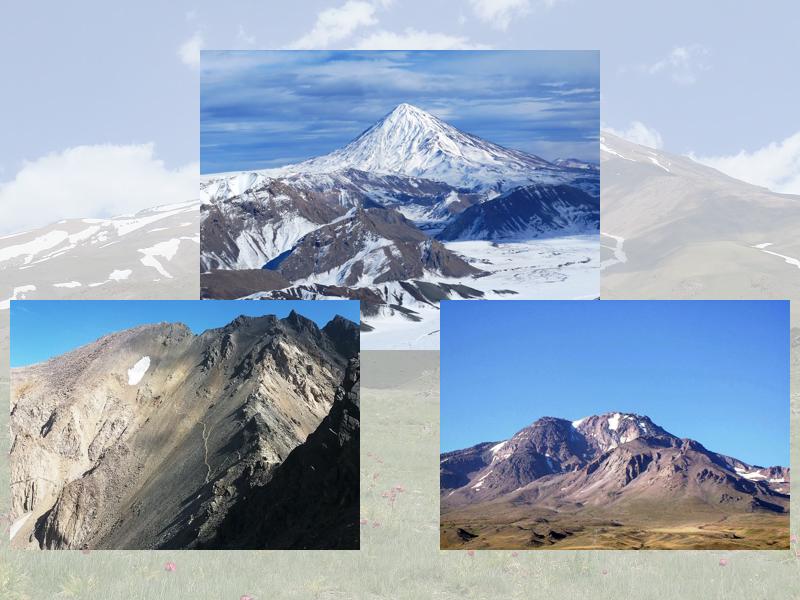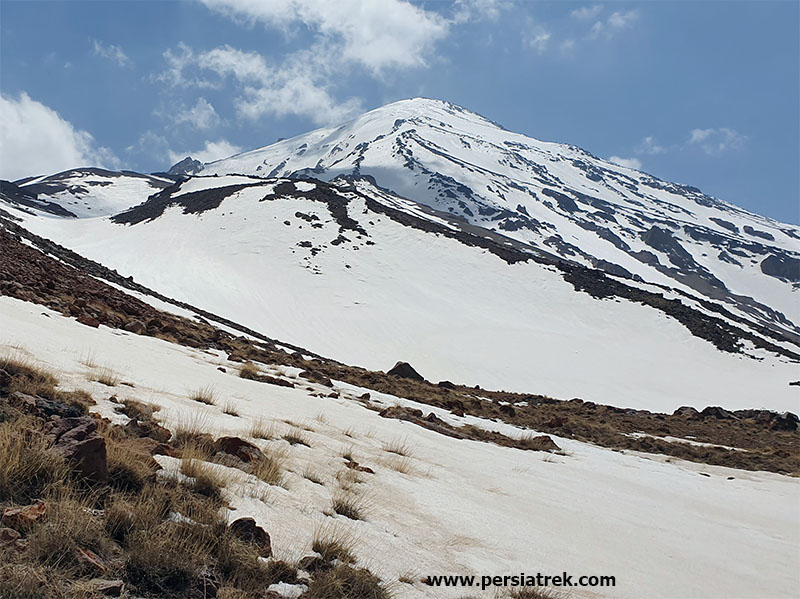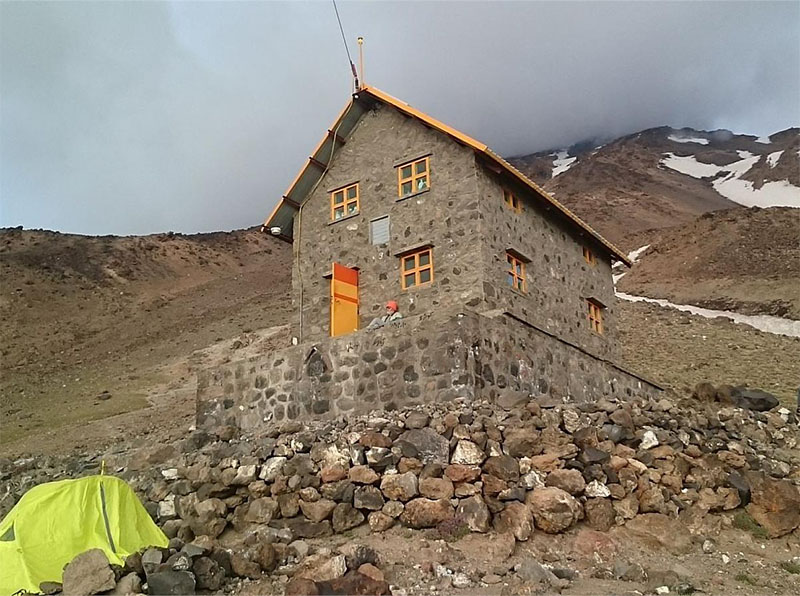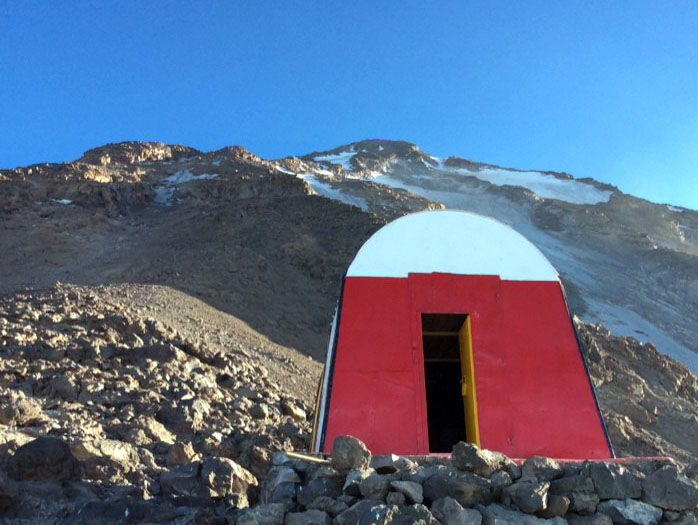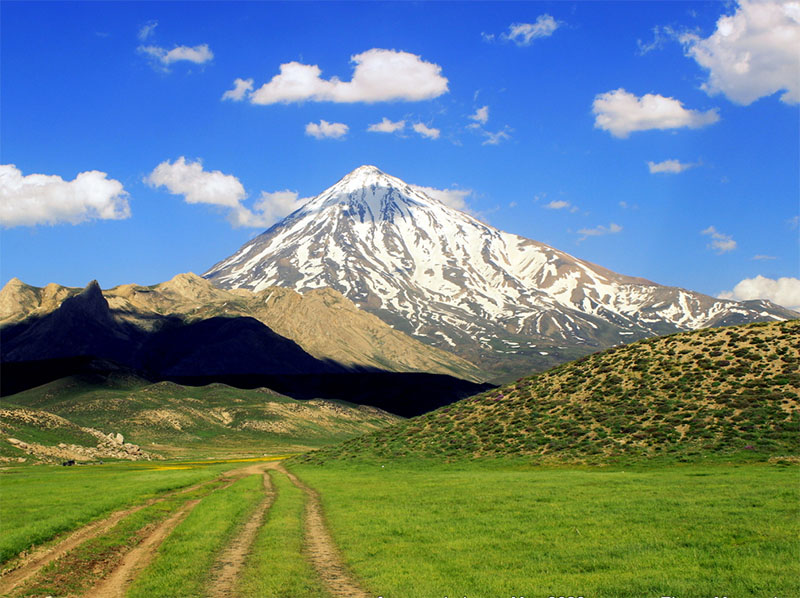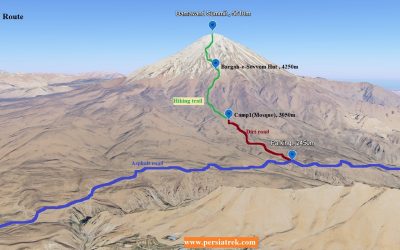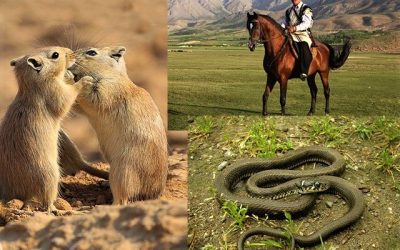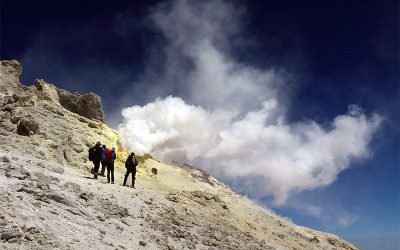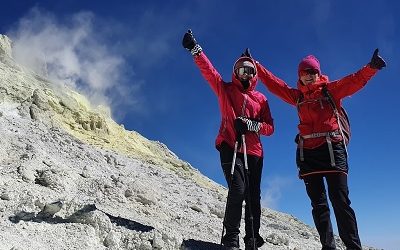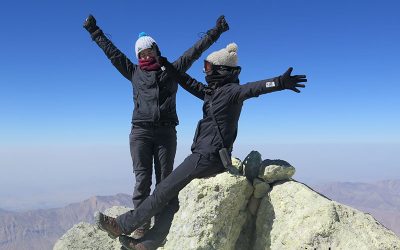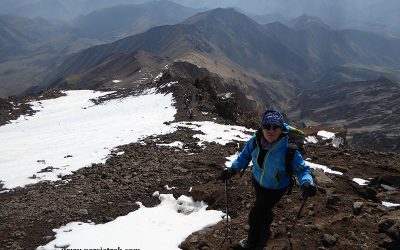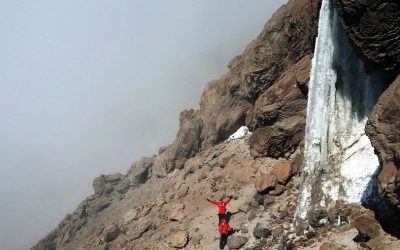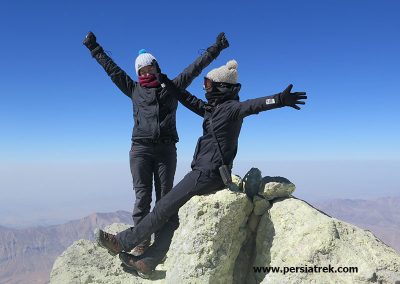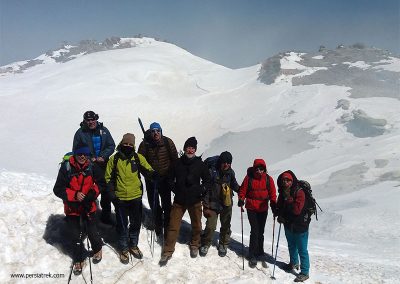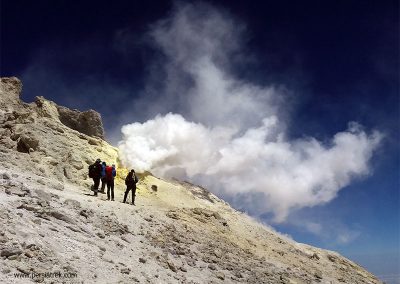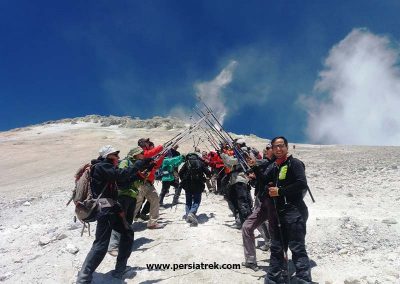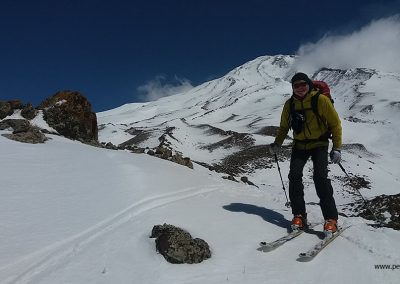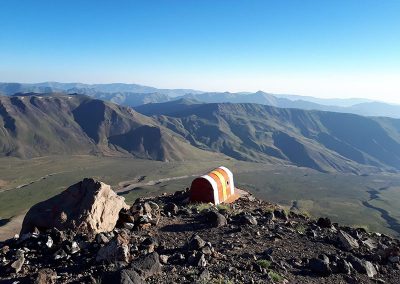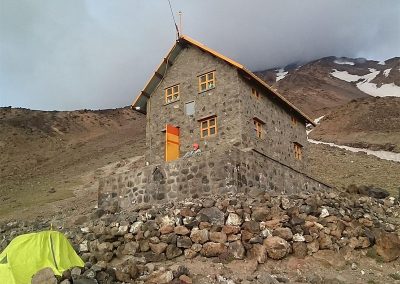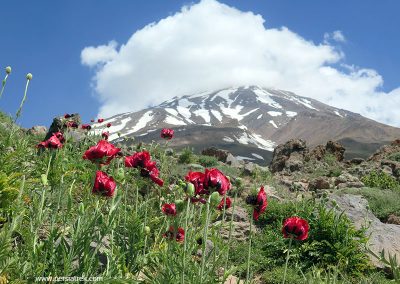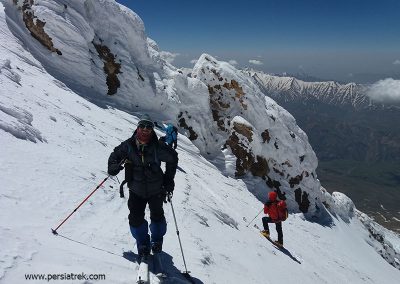Mount Damavand Climbing Guide
A Complete Guide to Iran's Highest PeakMount Damavand Climbing Guide
Introduction
Mount Damavand, standing tall at 5,610 meters (18,406 feet), is the highest peak in Iran and the Middle East. This majestic stratovolcano is not just a mountaineering challenge but also holds deep cultural and historical significance in Persian mythology. Every year, thousands of adventure seekers and professional climbers set out to conquer its snow-capped summit, making it one of the most popular climbs in Asia.
But what makes Damavand unique? Unlike other high-altitude mountains, it offers a relatively non-technical ascent, making it an excellent choice for experienced trekkers looking for a high-altitude challenge. Whether you’re an aspiring mountaineer or an experienced climber, this guide will provide all the essential information you need to prepare for an unforgettable ascent of Mount Damavand.
About Mount Damavand
Located in the Alborz mountain range, about 70 kilometers northeast of Tehran, Mount Damavand is an inactive volcano that last erupted around 7,300 years ago. It is often referred to as the “Roof of Iran”, offering breathtaking views from its summit on clear days.
Beyond its physical grandeur, Damavand holds a special place in Persian mythology. It is mentioned in Ferdowsi’s epic poem, the Shahnameh, where the mythical hero Fereydun defeats the tyrant Zahhak and imprisons him in the depths of Damavand. This connection to Persian folklore adds a layer of mystique to the mountain, attracting not just climbers but also cultural enthusiasts.
Best Time to Climb Mount Damavand
The best time to climb Damavand depends on your experience level and preferred weather conditions.
- Summer (June to September) – This is the peak climbing season due to mild weather, minimal snow, and clear skies. The temperatures at the summit can still drop below freezing, but overall, it offers the best conditions for beginners and experienced climbers alike.
- Winter (November to March) – Climbing during winter is only for highly experienced mountaineers. The harsh weather conditions, strong winds, and deep snow make the ascent extremely challenging.
- Spring and Autumn – These seasons offer a mix of both summer and winter conditions, with unpredictable weather patterns. Spring climbs can still have snow on the slopes, while autumn offers clearer but colder conditions.
For most climbers, mid-July to mid-September is the safest and most accessible period for a successful summit attempt.
Routes to the Summit
There are four main routes to the summit of Mount Damavand, each varying in difficulty and popularity.
1. Southern Route (Most Popular)
- The easiest and most commonly used route
- Has well-established camps and shelters
- Best choice for first-time climbers
- Start point: Polour / Rineh Village

2. Northern Route (Challenging)
- More technical and difficult due to steep slopes
- Fewer shelters and support points
- Recommended for experienced mountaineers

3. Western Route (Scenic but Difficult)
- Offers the most beautiful landscapes
- Less crowded but physically demanding
- Not many facilities along the way

4. North-Eastern Route (Less Traveled)
- The least used route, offering solitude
- Remote and challenging
- Requires excellent navigation skills

For most climbers, the Southern Route is the best choice due to its accessibility, safety, and well-maintained shelters.
Required Permits and Regulations
To climb Mount Damavand, you need to obtain a climbing permit from the Iranian Mountaineering Federation. Permits help authorities regulate the number of climbers and ensure safety measures are in place.
Key Regulations:
- Climbers must register with local authorities.
- Littering and environmental damage are strictly prohibited.
- Camping is allowed only in designated areas.
- Groups should carry emergency equipment, especially during off-season climbs.
These regulations help preserve Damavand’s natural beauty while ensuring a safe and sustainable climbing experience.
Physical Preparation and Training
Climbing Damavand requires both physical endurance and altitude adaptation. Training should begin at least 2-3 months in advance and include:
- Cardio workouts (running, hiking, cycling) to build stamina
- Strength training (leg and core exercises) to prepare for steep ascents
- Altitude training (hiking at increasing elevations) to adapt to lower oxygen levels
- Mental preparation to handle fatigue and extreme conditions
Since altitude sickness is a major concern, it’s essential to gradually acclimatize by spending extra time at base camps before attempting the final push to the summit.
Essential Gear and Equipment

Packing the right gear can make the difference between a successful climb and a dangerous struggle. See this Article : Mount Damavand Packing List
Clothing:
- Base layers (moisture-wicking)
- Insulating layers (fleece or down jacket)
- Outer shell (waterproof and windproof)
- Gloves, hats, and sunglasses (for protection against cold and UV rays)
Climbing Gear:
- Hiking boots (warm, waterproof, and sturdy)
- Trekking poles (for stability on steep sections)
- Crampons and ice axe (for winter climbs)
Other Essentials:
- High-energy snacks and water
- GPS device or maps
- First aid kit and medications
Proper gear ensures safety, comfort, and a better overall climbing experience
Accommodation and Base Camps

Mount Damavand Hut , located in south face of Damavand at 4260m elevation
Before starting your climb, it’s important to plan where to stay. The Polour and Rineh villages are the two main gateways to Mount Damavand, offering guesthouses and basic lodges where climbers can rest before the ascent.
Once on the mountain, there are several base camps and shelters depending on your chosen route:
Southern Route (Most Popular) Base Camps:
- Goosfand Sara (3,000m) – First major resting point with a mosque and water source.
- Bargah Sevom Shelter (4,200m) – The main high-altitude refuge with dormitory-style accommodations.
Other Routes Base Camps:
- Northern Route: Has fewer shelters, with one main hut at 4,000m.
- Western Route: Has a small, less-equipped shelter at 4,200m.
- Eastern Route: No established shelters—requires camping.
For a comfortable climb, staying at Bargah Sevom Shelter on the Southern Route is the best option. It provides dormitory beds, a small shop, and a great acclimatization spot before the summit attempt.
Climbing Itinerary (Day-by-Day Plan)

A well-planned itinerary improves your chances of success and reduces risks like altitude sickness. Here’s a recommended 3-day itinerary for the Southern Route:
Day 1: Arrival & Trek to Goosfand Sara (3,000m)
- Arrive in Polour Village (by car from Tehran, 2-3 hours).
- Drive to the starting point at 2,400m.
- Trek to Goosfand Sara camp (3,000m) (2-3 hours).
- Acclimatization hike and overnight stay.
Day 2: Trek to Bargah Sevom (4,200m)
- Trek for 4-6 hours to Bargah Sevom Shelter (4,200m).
- Rest, hydrate, and do an acclimatization hike to 4,500m.
- Overnight at Bargah Sevom.
Day 3: Summit Attempt & Descent
- Start early (4:00 AM) for the summit push (5,610m) (6-8 hours).
- Descend back to Bargah Sevom for a break.
- Continue descent to Goosfand Sara and return to Polour Village.
This itinerary ensures proper acclimatization and maximizes the chance of a successful summit.
Challenges and Risks
Climbing Damavand may not be technical, but it presents serious challenges:
1. Altitude Sickness
- The rapid altitude gain can cause headaches, nausea, and dizziness.
- Solution: Acclimatize properly, hydrate, and climb gradually.
2. Harsh Weather Conditions
- Temperatures at the summit can drop to -20°C in winter.
- Strong winds make the final ascent difficult.
- Solution: Check weather forecasts and wear proper gear.
3. Physical Exhaustion
- The final ascent is steep and demanding.
- Solution: Train beforehand and maintain a steady pace.
Being well-prepared helps minimize these risks, ensuring a safe and enjoyable climb.
Hiring a Guide vs. Solo Climbing
Many climbers debate whether to hire a guide or go solo. Here’s a comparison:
| Factor | Hiring a Guide | Solo Climbing |
|---|---|---|
| Safety | High – Guides know the terrain & rescue procedures | Moderate – Requires experience |
| Navigation | Easy – Guides know best routes | Difficult – Risk of getting lost |
| Cost | More expensive | Budget-friendly |
| Experience | Stress-free – Guides handle logistics | Self-reliant – More adventurous |
For first-time climbers, hiring a local guide is highly recommended for safety and navigation. Experienced mountaineers, however, can attempt the climb solo.
Wildlife and Natural Beauty
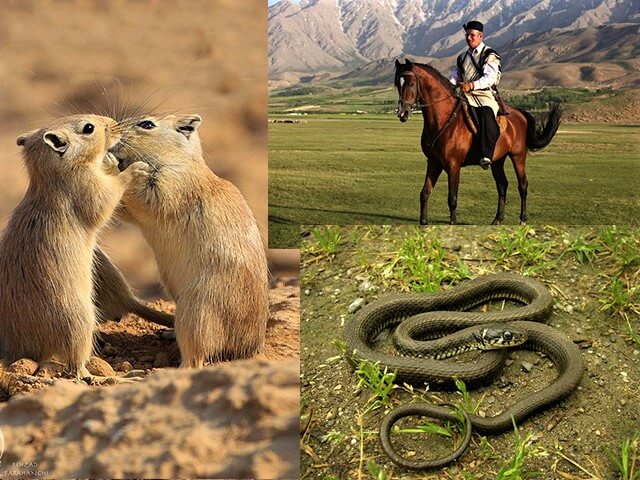
Mount Damavand is home to diverse wildlife and stunning landscapes.
- Flora: Alpine meadows, wildflowers, and sulfuric vents near the summit.
- Fauna: Ibex, wild goats, foxes, and eagles inhabit the lower slopes.
- Scenic Views: Panoramic views of the Alborz mountains and Caspian Sea on clear days.
Photographers will love capturing sunrise at the summit, where the clouds often settle below, creating a “floating island” effect.
Local Culture and Traditions
Mount Damavand is more than just a mountain; it’s deeply rooted in Iranian folklore and traditions.
- Persian Mythology: It’s believed to be the prison of Zahhak, an evil king in Persian legends.
- Local Villages: Nearby villages like Polour and Rineh offer a glimpse into rural Persian life.
- Hospitality: Locals are friendly and welcoming—a great chance to experience Iranian culture.
Respecting local customs, dressing modestly, and being polite enhance the experience.
Post-Climb Activities

After the climb, you can explore some amazing nearby attractions:
1. Lar National Park
- A scenic wildlife reserve near Damavand.
- Ideal for relaxing hikes and spotting wild animals.
2. Hot Springs in Larijan
- Best way to recover after the climb.
- Soothing natural hot springs with mineral-rich waters.
3. Tehran Sightseeing
- Visit the Golestan Palace, Grand Bazaar, and Milad Tower.
- Great way to experience Iranian culture and history.
These activities offer a perfect recovery after a challenging climb.
Conclusion and Final Tips
Mount Damavand is an incredible climbing destination that offers a mix of adventure, culture, and natural beauty. With proper preparation, the climb is achievable for both beginners and experienced mountaineers.
Final Tips:
✅ Choose the Southern Route for the best experience.
✅ Acclimatize properly to avoid altitude sickness.
✅ Pack essential clothing, gear, and food.
✅ Consider hiring a guide if it’s your first time.
✅ Enjoy the breathtaking scenery and local culture.
With these tips in mind, you’re ready to conquer the Roof of Iran!
Frequently Asked Questions (FAQs)
1. Is Mount Damavand harder than Kilimanjaro?
While both are high-altitude climbs, Kilimanjaro is longer and requires multiple days, while Damavand can be climbed in 2-3 days. However, Damavand’s steeper slopes and altitude sickness risks make it challenging.
2. Can beginners climb Mount Damavand?
Yes, but physical fitness and preparation are key. The Southern Route is the easiest and recommended for beginners.
3. Do I need a visa to climb Damavand?
Yes, most travelers require an Iranian visa. Be sure to check visa regulations for your nationality before planning your trip.
4. Are there any dangerous animals on Mount Damavand?
Wild animals like foxes, ibex, and birds of prey are common, but they pose no threat to climbers.
5. How much does it cost to climb Mount Damavand?
Costs vary but typically include:
- Permit: ~$50
- Guide Services: $300-$500 (optional)
- Accommodation & Food: $50-$100
- Gear Rental (if needed): ~$100

